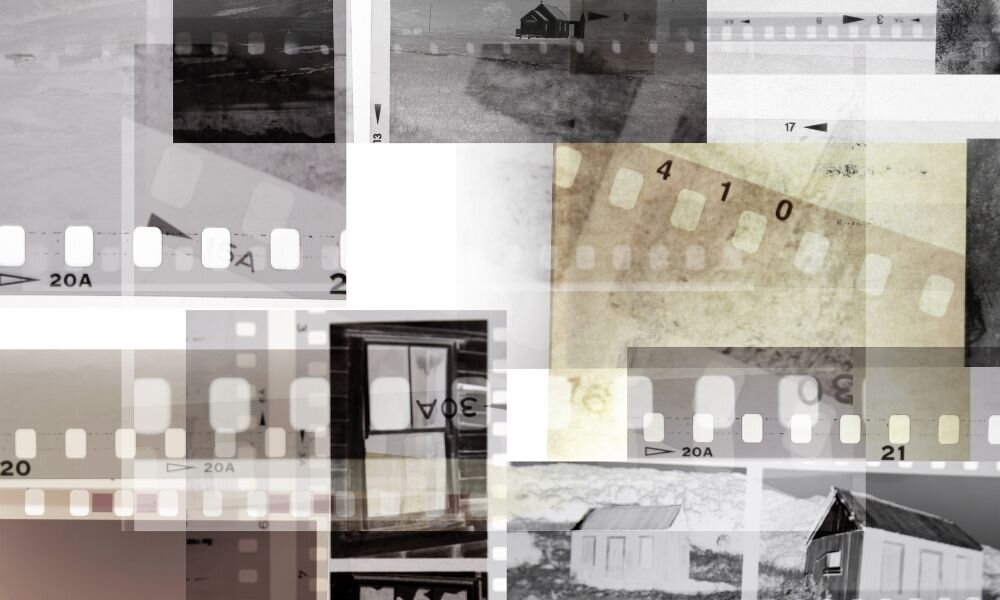What To Do With Old Photo Negatives
Photo prints are fun to put in albums and frame on walls, but what do you do with the negatives that they’ve left behind? Whether you’ve stored them in a shoebox with the prints for several decades or have them neatly pocketed in a grocery store branded photo envelope from the old days of casual photography, these fragile pieces of film are taking up precious storage in your house.
When you want to put them to good use, consider your options—but what options are there for an item with such a specific use? Here’s what to do with old photo negatives before you decide to dispose of them; they may have one last use for archival purposes before they’ve lived out their legacy.
Digitizing and Reprinting Photo Negatives
Your photo negatives are the basis for all your photo prints—in good condition, you can reprint photos right off the same negatives you used all those years ago. For archival purposes, however, you should consider digitizing the negatives to keep the memories safe while the physical formats degrade over time.
With high-quality digital scans of your photo negatives, you can continue to print the photos at the same quality—if not better quality—than you printed them out originally. You’ll also have the ability to share the photos online with friends and family across the world. You can transfer your digital files from computer to computer endlessly, making for quick file sharing. By using cloud storage, you can keep them safe even if something happens to your computer.
Be Selective When Choosing What to Keep
Don’t feel blinded by nostalgia when you choose which negatives to reprint and digitize—some may be doubles or detailed photos of someone’s thumb covering the lens. As you pick through each batch of negatives, look for the pictures that you want to keep rather than digitizing everything. Going through this process now rather than later will help you organize the photos on your computer easily.
Benefits of Using a Professional Scanning Service for Your Negatives
While it’s possible to scan your negatives on your own, they may not come out at the quality you want. Employing a reliable, well-renowned service to convert photos to digital will remove the burden of scanning off your back—you can rest easy knowing they’ll handle the tedious, repetitive work of scanning and optimizing your photos from negatives, and you’ll have your negatives back in no time.
Reprinting From Digital
Once you have the digital files, you can do whatever you want with them. If you want to reprint the photos, it’s easy to print them off the computer onto photo paper using your home printer. You can also enlist a professional printing company to make high-quality prints of your favorite photos for projects that require a professional touch.
Transporting Your Photo Negatives
Sending your negatives to a digitization company may require you to carefully pack them into a shipping container. If you’re nervous about damaging the fragile plastic material, ensure that you do everything in your power to keep them safe during transit.
Place each negative into its own clean polyethylene sleeves or acid-free envelopes—don’t put multiple in the same sleeve or envelope. Don’t leave too much empty space in your shipping container. Opt for a shipping envelope if possible, but otherwise, you can add protective stuffing to avoid harmful jostling during transport. When transporting the negatives in a box, lie them flat and mark the package as fragile. If you’re within driving or walking distance to the digitizing service, bring the negatives in yourself to keep them safe.
Storing and Handling Your Negatives
While you figure out what to do with your old photo negatives, it’s important to keep them in a safe, secure location and handle them with the utmost care. Negatives are more fragile than photo prints, and even more difficult to store properly. For perfect preservation, photo negatives require a low-temperature environment. Professionals may use a cold storage enclosure for their negatives to archive their originals at a cool 40 degrees Fahrenheit.
If you’re storing family photo negatives, you can prevent degradation by keeping them in polyethylene sleeves or acid-free paper envelopes and placing them flat in a waterproof container. Keep the negatives in the coolest, driest part of your house, away from heat and light sources. While a basement is colder than the rest of your home, it may be too damp and humid for photo or negative storage—carefully consider all factors of safe negative storage before choosing a location.
Wash and dry your hands before handling photo negatives. Only touch the edges of the film—the oils from your hands can damage the image of the negative. Before you store them, gently remove any accumulated dust to prevent scratches inside their protective sleeve. Never mark a negative with pens, markers, or paper clips; only mark the sleeve or envelope for easy organization.
What To Do With Damaged or Degraded Negatives
Whether you’ve acquired negatives from someone who stored them poorly or have unknowingly left them in an unfavorable storage location, you may have damaged and faded photo negatives. Once a photo negative is damaged, it can be difficult to retrieve an image from it—sometimes impossible. The degradation process begins with an unpleasant vinegar smell coming from the negative; from there, you can only slow it down with proper storage.
If you notice your photo negatives starting to degrade or if you find damage on your negatives, get a professional opinion to determine whether all is lost. Professional photo scanning services will know if a negative is too far gone for repair. Or they may be able to restore the final product without any issues.
At DiJiFi, we offer photo restoration services in addition to our high-quality photo negative digitization services. We convert many different photo negative formats to digital—from the classic 35mm film to the lesser-used medium and large formats. When you’re ready to preserve your personal pieces of history, contact us to discuss your photo negative digitization project!


